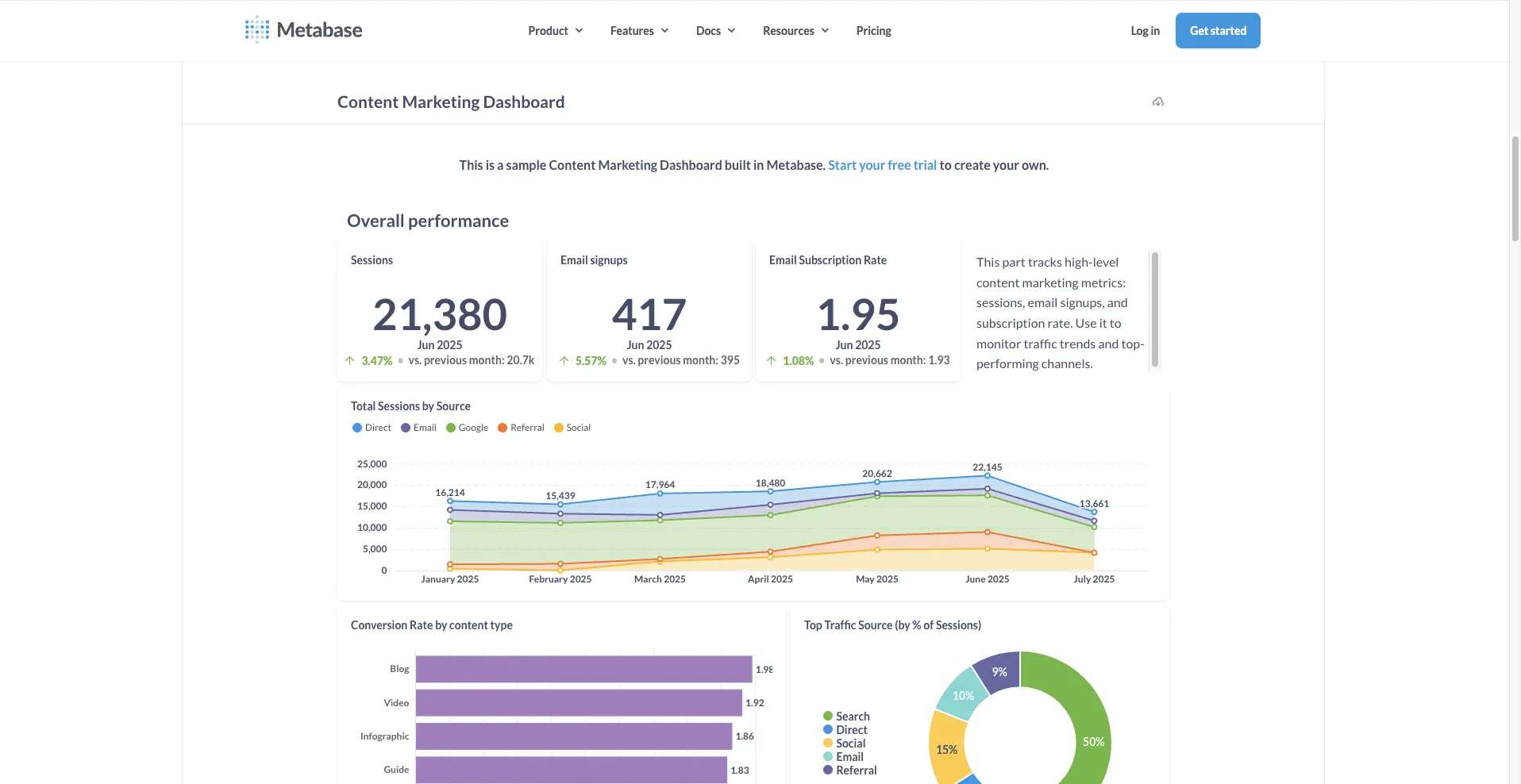Build your first embedded data product now. Talk to our product experts for a guided demo or get your hands dirty with a free 10-day trial.
Do you know that the analytics module is often the silent churn engine in SaaS?
For most SaaS and digital product teams, the analytics module is the part of the product roadmap that gets squeezed between must-have features and endless bug fixes. Everyone says analytics matters, until it’s time to actually use it. At that point, customers log in, see a flat dashboard with yesterday’s data, and immediately click “Export.”
If you look at your product analytics, you’ll probably see the same story: the analytics module has the lowest engagement, the most support tickets, and almost zero organic praise.
The irony? Product and data teams pour months into building analytics that “look great on a slide.” But once released, those dashboards become the number one source of frustration for users. Slow load times, canned metrics, no ability to dig deeper, and zero connection to actual decisions. This isn’t just a missed opportunity; it’s the single biggest hidden reason for churn inside most B2B products.
Recent research from Luzmo drives the point home in the 2025 dashboard statistics report. What’s damning is that 72% of users regularly export data to Excel because in-app analytics modules aren’t delivering what’s needed. That means your “analytics tab” is often the first exit route—not the engagement magnet it should be.
It’s not just about “adding charts.” What users actually want from an analytics module in 2025 is miles beyond the drag-and-drop dashboards of the last decade.
Most SaaS churn surveys will tell you: the analytics module is the single most powerful lever for retention or attrition. Nail it, and you become indispensable. Botch it, and users quietly slip away.
Think of an analytics module as your product’s secret weapon. When done right, it becomes the “wow” moment in every onboarding, QBR, and renewal call. Here’s what sets the best apart:
Below, we review the seven leading analytics modules you can embed in your SaaS or product environment, each with a unique strength, not just a recycled list.

If you’ve ever heard a customer say, “Your dashboards look like a different app,” Luzmo is the fix. Luzmo was designed to make analytics modules feel like a core part of your product, never a bolt-on.
What makes Luzmo stand out:
Who Luzmo isn’t for:
If you’re a legacy enterprise looking for static, internal-only BI, or a solo operator wanting a simple Excel exporter, Luzmo is probably overkill. But if you want analytics modules that increase engagement, retention, and revenue for your software product, it’s in a class of its own.

Qlik is best known for its associative engine, which makes it possible to filter, drill, and cross-reference data in a way that feels fluid and organic. For SaaS teams that need to empower users with deep, exploratory analytics—think complex operations, logistics, or finance—Qlik’s analytics module is a contender.
Where Qlik shines:
Where it struggles:
Best for:
Enterprise SaaS, data-driven verticals, or any product where true data exploration is a selling point.

Sisense is a developer’s playground: its analytics modules (called “infusion apps”) can be embedded, white labeled, and adapted at nearly any touchpoint inside your app.
Strengths:
Limitations:
Best for:
ISVs, SaaS platforms, or digital products wanting total control over their analytics modules, especially if you want to embed widgets, not just dashboards.

For startups and fast-moving SaaS teams, Metabase is a go-to for rapid deployment. The analytics module feels light, approachable, and offers good value—especially for smaller teams or internal tools.
Where Metabase shines:
Drawbacks:
Best for:
Startups, SMBs, or any team needing to launch analytics modules quickly and iterate without vendor lock-in. For enterprise SaaS businesses looking for scalability, there are better alternatives to Metabase.

Power BI Embedded is a natural choice for teams that already live in the Microsoft world. The analytics module provides drag-and-drop reporting, deep integration with Azure, and all the compliance boxes checked for larger orgs.
Strengths:
Weaknesses:
Best for:
Enterprise or mid-market SaaS products already using Microsoft, especially where compliance and security are top priorities.

GoodData is a heavyweight in multi-tenant, programmable analytics modules. Its API-first approach is perfect for SaaS vendors serving lots of customers, each with their own dashboards, permissions, and branding.
What’s special:
Challenges:
Best for:
ISVs, regulated industries, or product teams needing deep customization and rock-solid security.

ThoughtSpot flips the analytics module script: instead of clicking through menus, users just type questions in plain language and get instant charts, KPIs, and insights. For non-technical users, this feels empowering—analytics on demand, no manual required.
Strengths:
Limitations:
Best for:
SaaS teams serving non-technical audiences, or any product where “just ask and get an answer” is a selling point.
Don’t just chase features or a slick demo. Instead, focus on these questions:
Want to compare the best analytics modules side by side? Download the analytics module comparison matrix for a clear, buyer-focused breakdown.
Too many products settle for analytics modules that are “good enough” on paper, but never deliver for real users. In 2025, the winners are teams who treat analytics as a product, not a feature. If your analytics module gives every user fast, actionable, and personalized answers, you become essential – not just another tool.
Luzmo leads for embedded, interactive analytics modules—thanks to rapid integration, robust connectivity, and product-driven design. But every platform on this list can help you move beyond “dead dashboards”—if you match the right module to your audience, workflow, and growth plan.
Ready to see how a modern analytics module changes user engagement for good? Explore Luzmo.
Build your first embedded data product now. Talk to our product experts for a guided demo or get your hands dirty with a free 10-day trial.
